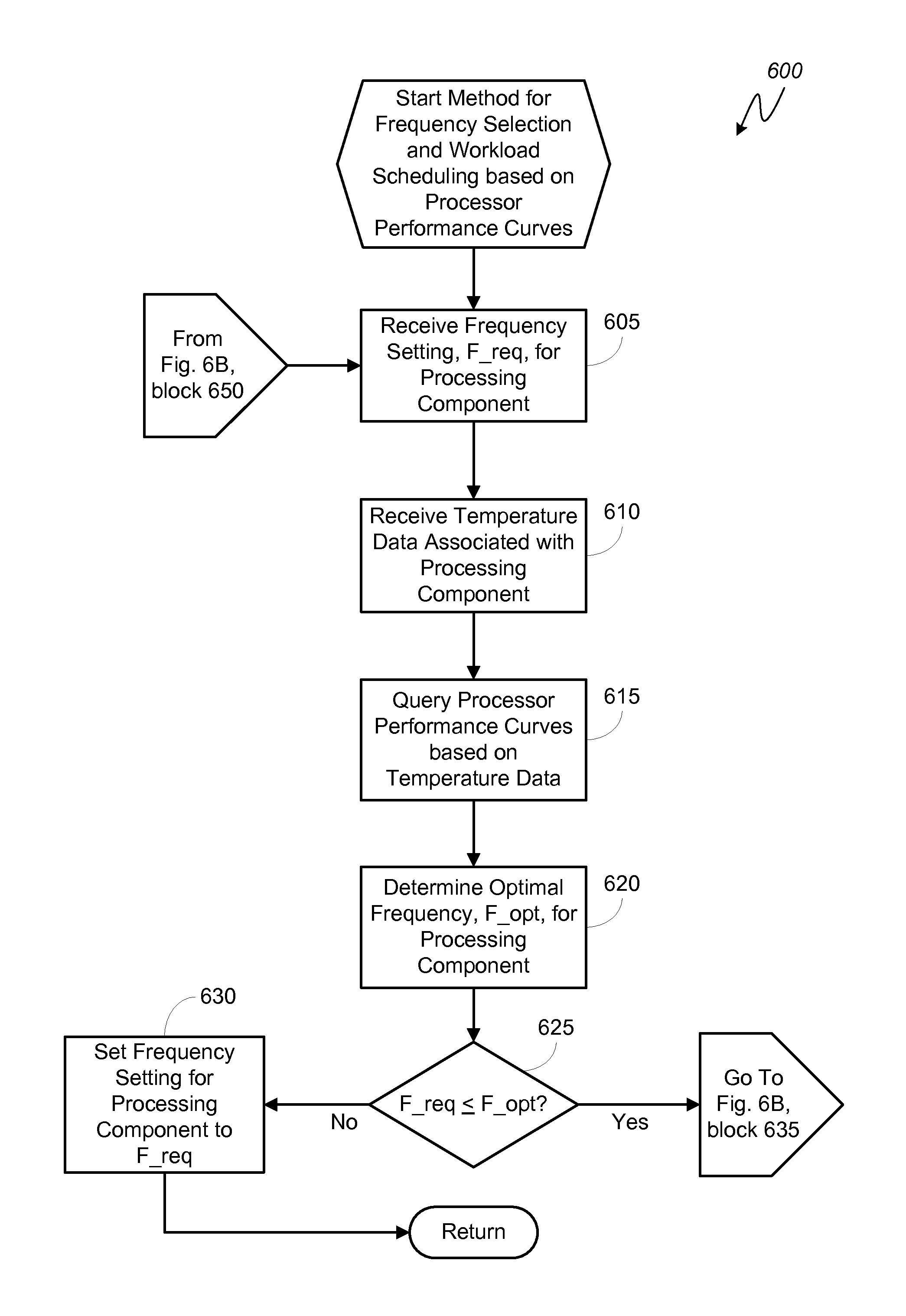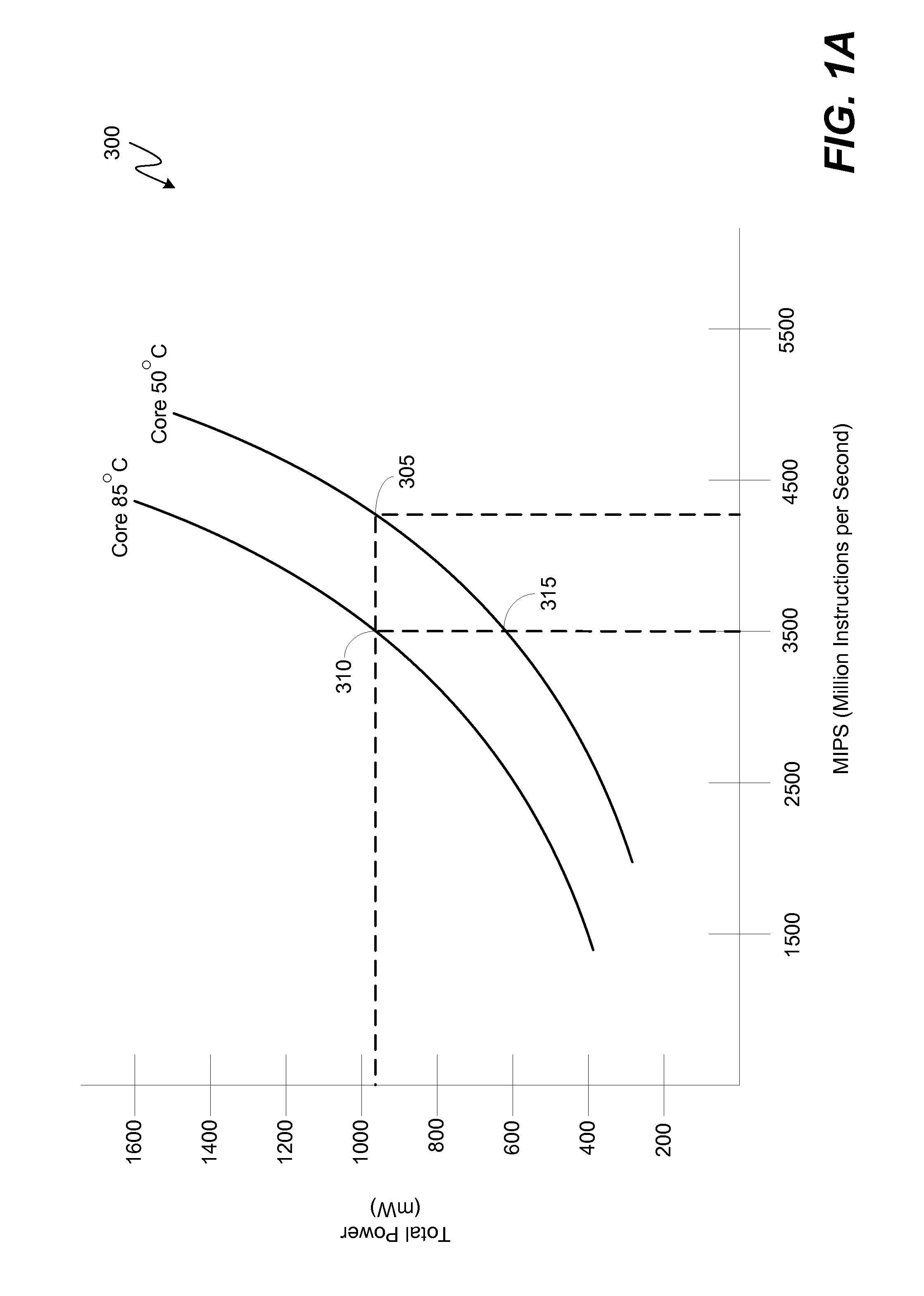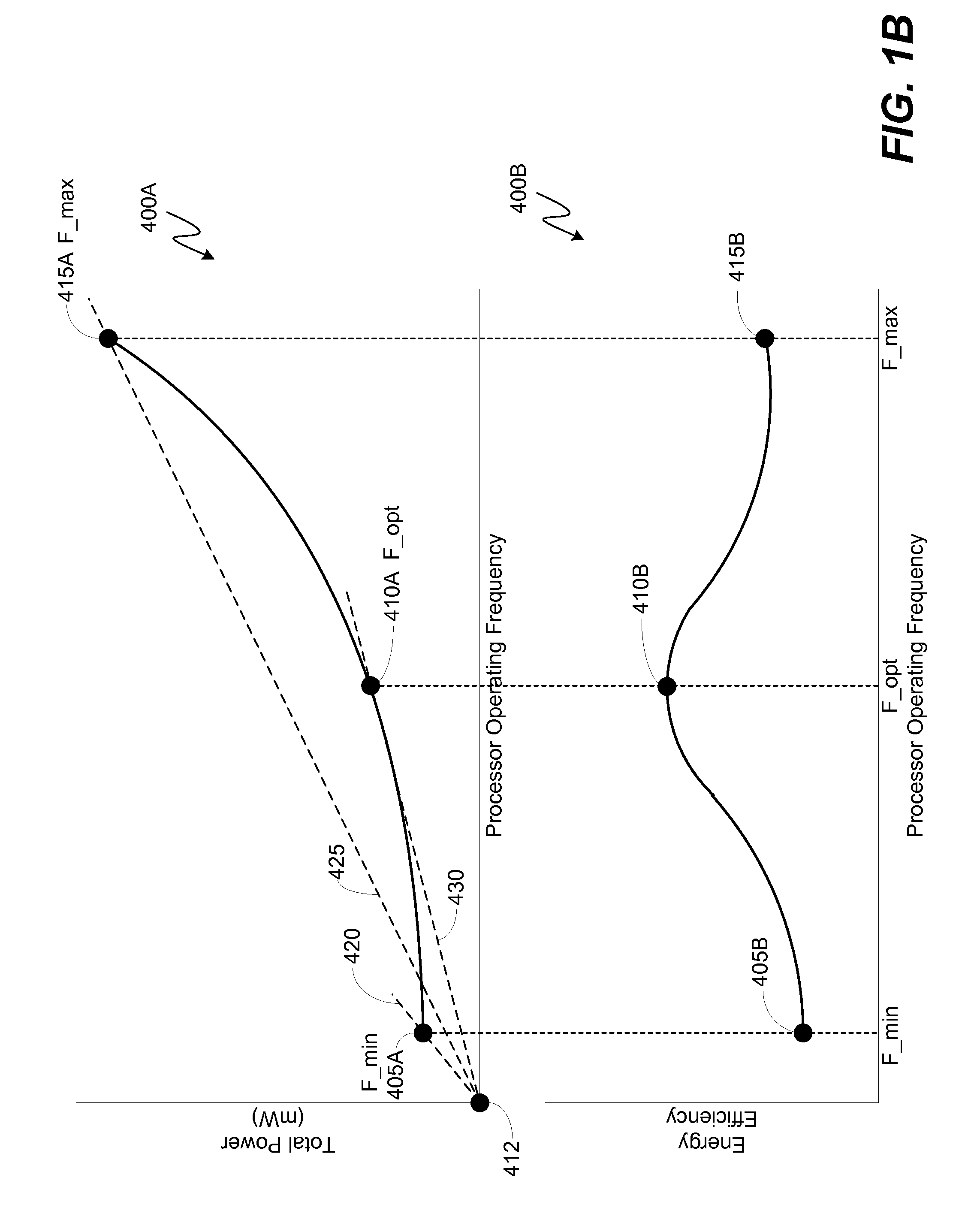System and method for dynamic DCVS adjustment and workload scheduling in a system on a chip
a technology of dynamic dcvs and workload scheduling, which is applied in the field of system and method for dynamic dcvs adjustment and workload scheduling in a system on a chip, can solve the problems of insufficient space for engineers and designers, inability to run processing components in a pcd at their maximum rated power frequency without producing detrimental levels of thermal energy, and inability to optimize power consumption. , to achieve the effect of optimizing power savings, optimizing power consumption, and maximizing
- Summary
- Abstract
- Description
- Claims
- Application Information
AI Technical Summary
Benefits of technology
Problems solved by technology
Method used
Image
Examples
Embodiment Construction
[0025]The word “exemplary” is used herein to mean “serving as an example, instance, or illustration.” Any aspect described herein as “exemplary” is not necessarily to be construed as exclusive, preferred or advantageous over other aspects.
[0026]In this description, the term “application” may also include files having executable content, such as: object code, scripts, byte code, markup language files, and patches. In addition, an “application” referred to herein, may also include files that are not executable in nature, such as documents that may need to be opened or other data files that need to be accessed.
[0027]As used in this description, the terms “component,”“database,”“module,”“system,”“thermal energy generating component,”“processing component,”“processing engine” and the like are intended to refer to a computer-related entity, either hardware, firmware, a combination of hardware and software, software, or software in execution. For example, a component may be, but is not lim...
PUM
 Login to View More
Login to View More Abstract
Description
Claims
Application Information
 Login to View More
Login to View More - R&D
- Intellectual Property
- Life Sciences
- Materials
- Tech Scout
- Unparalleled Data Quality
- Higher Quality Content
- 60% Fewer Hallucinations
Browse by: Latest US Patents, China's latest patents, Technical Efficacy Thesaurus, Application Domain, Technology Topic, Popular Technical Reports.
© 2025 PatSnap. All rights reserved.Legal|Privacy policy|Modern Slavery Act Transparency Statement|Sitemap|About US| Contact US: help@patsnap.com



